
Convention Report
Spring 2004
New Orleans, LA

Forty members and guests
attended the Spring 2004 convention of the Motor Bus Society, which was held in
New Orleans, Louisiana during the weekend of April 17 and 18. Headquarters hotel was the Radisson - New Orleans on Canal
Street in downtown, just outside
the French Quarter. Convention
Chairman was Dino Mandros, who was assisted by New Orleans area MBS member David
Grant. During the week prior to the
convention, Dino injured his foot and his duties as tour director were assumed
by Gerald Squier with the help of David Grant.
Saturday
Tour:
The first stop was five minutes away from the hotel at the New Orleans Union
Passenger Terminal. This
multi-modal facility is the New Orleans terminal of Amtrak rail and Greyhound
bus intercity passengers. There
was not much activity at the station during the short stop, but several
Greyhounds and a Coach USA bus were seen. Then it was across the Mississippi
River to the so-called Westbank area (actually the south side of the River,
which generally runs east-west through the New Orleans area) and the Wilty
Transit Terminal (transit center) in the City of Gretna.
Most of the south side of the River is in Jefferson Parish (county) and
is served by Jefferson Transit (Jefferson Parish-Transit Division), known
locally at JeT. But the eastern
end includes a section of Orleans Parish and the City of New Orleans, known as
Algiers. This area is served by
the New Orleans Regional Transit Authority (NORTA) commonly known as RTA.
The Wilty Terminal is served by both JeT and RTA buses, and examples
from both agencies arrived during the visit.
The tour then continued on to the Westside Transit garage, also in
Gretna. Westside Transit (now
owned by ATC) is the historic private operator of service on the south side,
and they had owned the property on which the garage now sits.
The location is now owned by Jefferson Parish, and the facilities there
were completely rebuilt several years ago by them.
It is now the Parish's Westbank transit maintenance facility, and
Westside as the Westbank contract operator is allowed to use it.
Jefferson Parish funds and directs JeT operations.
Its bus fleet consists entirely of Gillig 0Phantom busesB53
40 footers and five 30 footers, Twenty-nine
of the 40- and two of the 30-foot Gilligs are used on the 12 route Westbank
operation. Leaving the
Westside garage, the tour continued to the Walkertown Transit Terminal in the
town of Marrero, several miles to the west.
The Walkertown Terminal is located under the Westbank (US 90)
Expressway. From
Walkertown, the tour continued west on US 90 and then took the Huey P. Long
Bridge across the Mississippi to the north side, known locally as the Eastbank.
This area, which is west of the Orleans Parish/City of New Orleans
boundary, is also in Jefferson Parish, and is also operated by JeT as its
Eastbank division. The next stop
was at the garage of Louisiana Transit Co., the historic private operator of
service on that portion of the north side that is west of the City of New
Orleans and Orleans Parish (which are a single political unit). The JeT Eastbank garage is also owned by the Parish, and was
built on previously owned property in Metairie. This facility is JeT's Eastbank operating and maintenance
facility and is used by LTCo as contract operator.
This facility replaces the LTCo-owned garage in Harahan; the Company
is still owned by Kent Mitchell, whose family has owned it for many
years. Kent was on hand to host the MBS visit to the new garage. LTCo
uses the balance of the Parish=s
30 and 40-foot Gilligs on its six routes. Leaving LTCo, the tour took Interstate 10 west to Baton Rouge
and Louisiana=s
capital city and the garage of Capital Transportation Corp., the local transit
operator in that city. The garage
and transit center are located on Florida Blvd. east of downtown.
Known as CTC, the operation is owned by the City of Baton Rouge/Parish
of East Baton Rouge, and it operates a system of 16 fixed-routes with a fleet
of 57 buses, including 51 Gillig
Phantoms (49 35- and two 30-footers), four 35-foot Low Floor Gilligs and two
30-foot Bluebird transits. Also
in the fleet are 20 Ford-Goshen cutaway vans primarily used for ADA
paratransit service (although some are also used in fixed-route service) and
five Optima trolley replicas. Most
of the routes go through the adjacent transit center, which is a center island
affair with enclosed air-conditioned waiting room.
After lunch at the Cortana Mall, the tour stopped at the Baton Rouge
Greyhound station, and this was followed by a sight-seeing tour of downtown
Baton Rouge, including the capitol and historic areas.
Then it was back on I-10 to New Orleans, and a final stop at Hotard
Tours, the local Gray Line operator. Hotard
operates a fleet of mostly MCI highway buses in charter and tour/sightseeing
service. After the Hotard stop,
the tour returned to the headquarters hotel.
Spring
2004 Meeting:
The semi-annual business meeting was chaired by MBS President, Charlie
Sullivan. Attendees were advised
of the change in editorship of the Society's
magazines due to the ill-health of MCA Editor, Mac Sebree. Charlie reported
that Al Meier agreed to re-assume editorship of MCA, and it is planned to
merge MCT into a more frequent MCA. Charlie
also advised that he expects ballots for the upcoming election of MBS officers
to be sent out with the next magazine mailing.
Vice President-Conventions Gerald Squier reported that he plans to
conduct a mail survey to determine the members'
preference on locations for meetings for the 2006-2010 period.
The survey will be included with an MCA mailing and is to be sent out
later in 2004. Entertainment for
the evening was slides of the New Orleans area by Gerald Squier and by Harry
Peat of California and other areas. The
meeting was adjourned by 9:00 PM to allow participants the opportunity to
attend the opening of the new Canal Street rail service.
Canal
Streetcar Opening:
The opening of new light rail service on Canal Street in New Orleans happened to
occur during the convention. The
event reestablished streetcar service that had been removed in 1964B40
years earlier. All-night hourly
service is and was operated on Canal Street from the Cemeteries to the River,
and the first daytime runs are scheduled to pull-out of the Canal facility at
around 3:30 AM. RTA had planned to
start the new rail service on Sunday morning, April 18th, so the Saturday night
Canal Owl was the last bus to operate on the 42-Canal-Cemeteries route; and it
pulled in to the Canal garage around 4:30 AMBafter
streetcars had already started to run. A few of the more hearty convention participants attended the
event, which was concluded by 5:00 AM, three hours before the start of the
regular Sunday tour at 8:00 AM.
Sunday
Tour:
The Sunday tour covered the three RTA facilities.
The first stop was at the Carrollton carbarn and shops.
The fleet of about 35 historic Saint Charles Line streetcars are stored
and maintained at this location. The
shops do all heavy rail maintenance, and in fact the 24 new light rail vehicles
for the Canal Line were constructed there.
RTA Director of Maintenance Eddy Moore met the group at Carrollton and
showed them through the facility and answered their numerous questions as well.
Mr. Moore also conducted the tours at the other two facilities.
Leaving Carrollton, the tour stopped at the Carrollton and Claiborne
terminal. This location is at the
end of the Saint Charles streetcar line, but the RTA Tulane, Carrollton and
South Claiborne, and JeT Kenner Local buses also end there and RTA's Carrollton
Express passes there. Next stop was
at the Canal facility. This new
operating base replaces the old Canal Station carbarn and bus garage and storage
lots that had occupied four city blocks. The
new facility also occupies the same four-square-block area, although the
interior streets no longer exist as such, the perimeter having been fenced-in
and the interior redeveloped. The
new facility includes operating and
state-of-the-art routine maintenance locations for both the bus and light rail
vehicles. The RTA bus fleet
includes 286 Orion V (five) buses of which 30 are 30 footers (05.505's) and the
remainder are 40 footers (05.501's); there are also 71 New Flyer D-40's and six
Chance trolley replicas for the French Quarter shuttle, for a total of 364 fixed
route buses. Leaving the Canal
facility, the tour proceeded to the Cemeteries terminal of the Canal streetcar
line. This is also the terminal for
several RTA and JeT Eastbank bus routes. Then
the group went on to lunch at the Lakeside Mall, and then to the RTA ENO (East
New Orleans) bus garage. This
relatively new facility houses a second bus operations location as well as the
primary overhaul shops for the bus system.
All ADA paratransit operations emanate at this location. After the tour of ENO, the group returned to the hotel for an
early 3:00 PM end time. This
allowed attendees to take independent rides on the new Canal Street streetcar
service, take selected bus rides or early departures to the airport.
Acknowledgments:
Buses
for the convention were supplied by Kohoutek Transportation, Inc. on Saturday
and by RTA on Sunday. The
Conventions staff wish to thank the following people for their efforts in
helping to make the New Orleans convention so enjoyable:
New
Orleans Regional Transit Authority: Bill
Deville, General Manager, Gerald Robichaux, Deputy General Manager/Operations,
Eddy
Moore, Director of Maintenance
Westside
Transit Lines: Anthony
C. Beckford, General Manager
Louisiana
Transit Co.:
Kent Mitchell, owner and Michael J. Seither, General Manager
Capital
Transportation Corp.:
Steve Rushing, Maintenance Superintendent
Photos
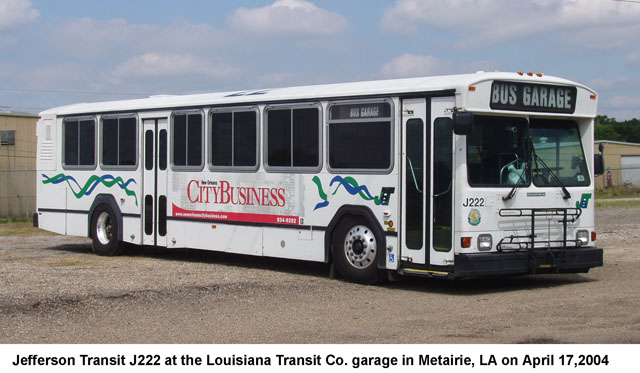 |
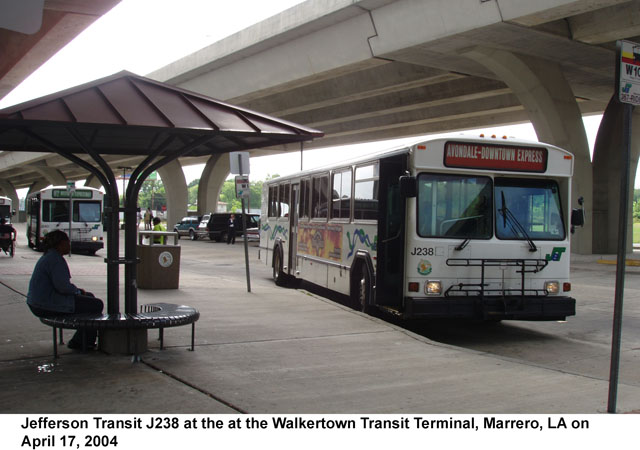 |
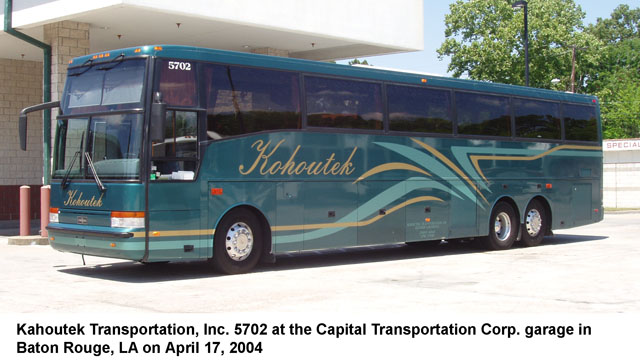 |
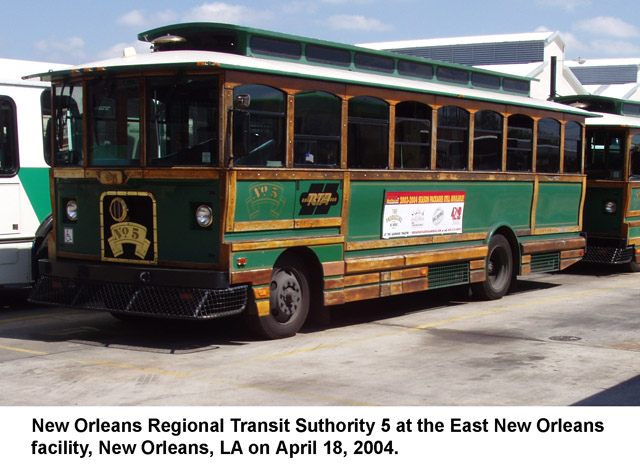 |
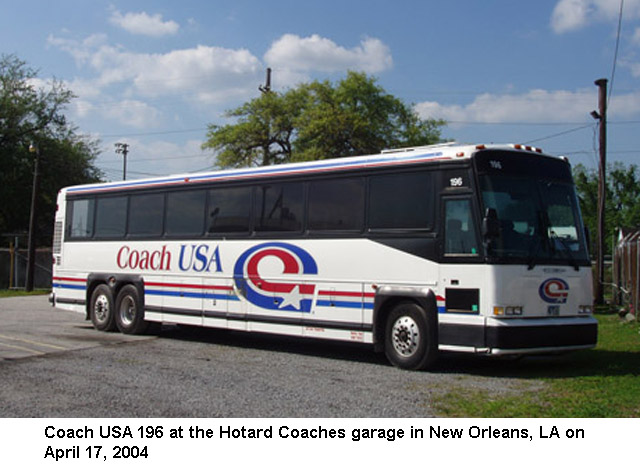 |
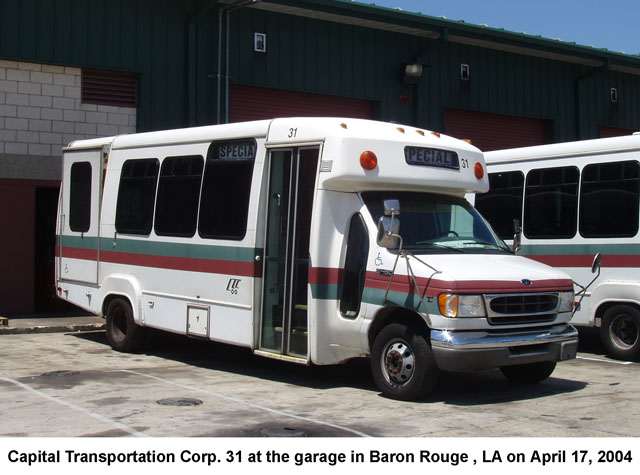 |
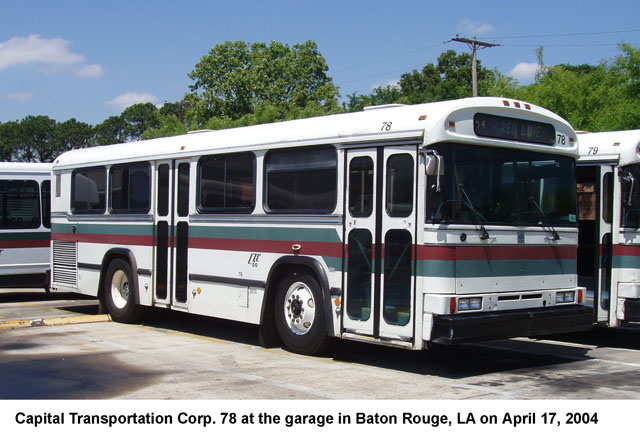 |
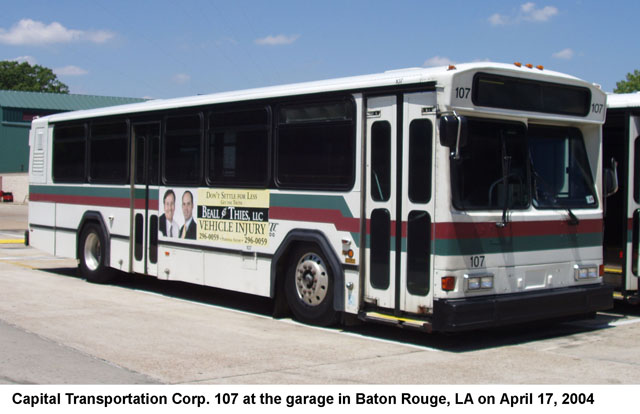 |
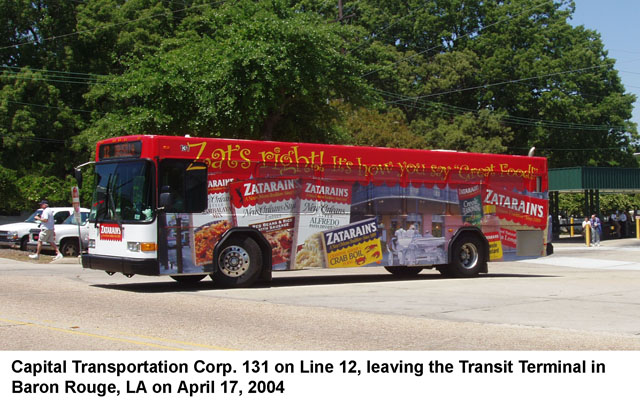 |
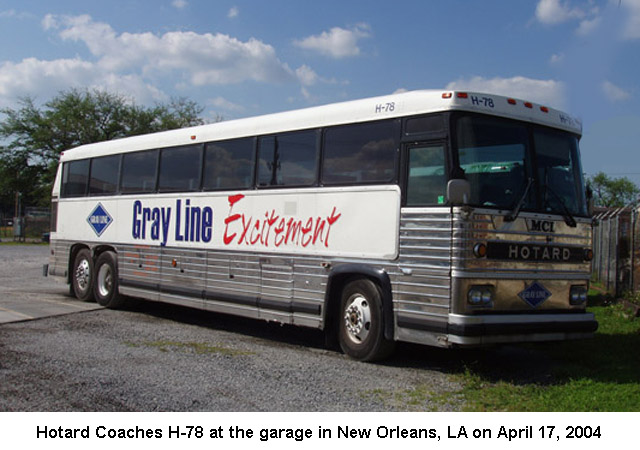 |
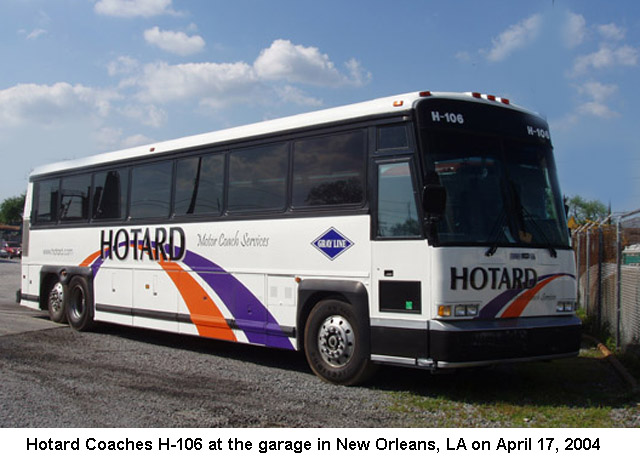 |
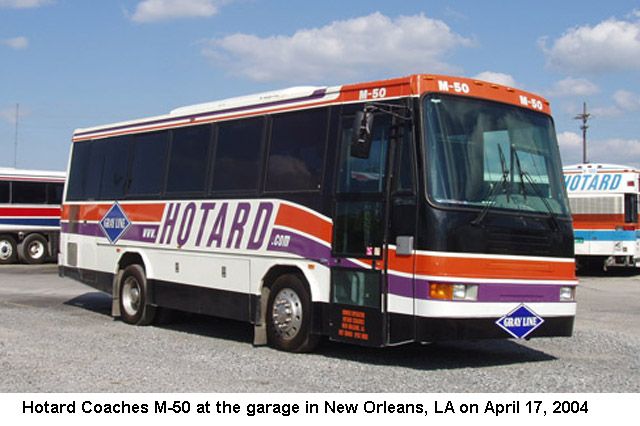 |
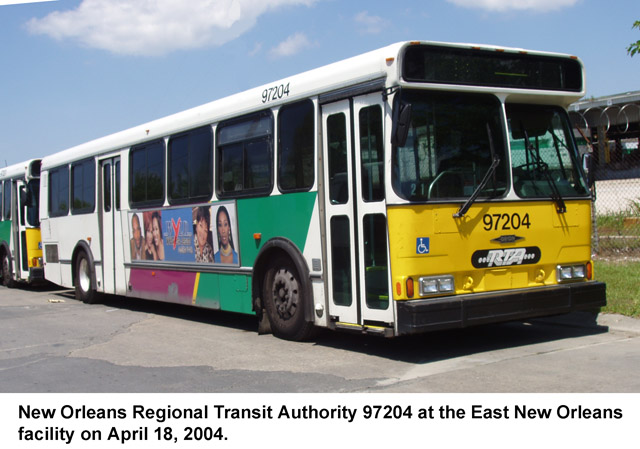 |